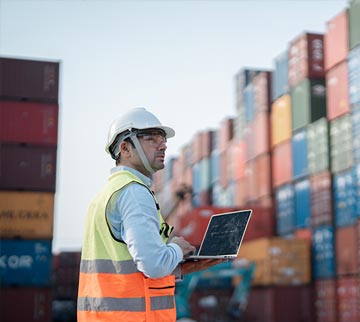The global shipping industry stands at a pivotal juncture, facing a paradigm shift driven by evolving geostrategic landscapes and rapid technological advancements. Maintaining competitiveness in this new maritime world requires a bold revolution, surpassing heavily subsidised and government-backed shipbuilding and shipping industries elsewhere. This necessitates a "blue ocean strategy" â a multifaceted approach focusing on creating new market space rather than engaging in traditional competition. History provides valuable insight into achieving such a transformation.
The last significant shift in maritime paradigms stemmed from two post-World War II innovations: modular ship construction and containerisation. Modularisation, crucial during the war for rapidly connecting dispersed US factories, laid the groundwork for efficient assembly. Containerisation, pioneered by Malcolm McLean in 1956, involved repurposing a wartime tanker to transport 58 truck trailers, revolutionising cargo handling.
The next paradigm shift will involve a new intermodal system connecting more customers across a wider, more dispersed trade network. This necessitates seamless integration of new and existing transport methods, building upon today's container-dominated multimodalism. As McLean's experience demonstrates, success begins with a workable vision addressing three core principles of profitable shipping:
1. Minimising Port Time: Reducing port dwell time while maximising capacity for revenue-generating freight, minimising overhead costs associated with port fees and labour.
2. Diversifying Trade Routes: Ensuring timely delivery requires resilient shipping routes to mitigate disruptions, such as those caused by Houthi attacks in the Red Sea or the 2021 Suez Canal blockage by the Ever Given, which disrupted 10% of global maritime trade at an estimated cost of $10 billion per day.
3. Increasing Cargo Throughput: While economies of scale encourage larger vessels, this necessitates significant port infrastructure upgrades (cranes, storage, rail and road connections), potentially limiting the number of ports accessible â the so-called "post-Panamax syndrome."
Achieving this shipping revolution requires leveraging several key technologies within a new global logistics network:
1. Decentralised Production: Intelligent networks using AI and blockchain technology can streamline port and shipping operations. Additive manufacturing offers the potential to significantly decentralise production points.
2. Next-Generation Cargo Containers: Re-imagining the shipping container, much like McLean did, is vital to optimise modern trade. Current container utilisation rates hover around 65%, highlighting significant room for improvement.
3. Multi-Modal Transport: Shifting cargo to sea and river networks can alleviate driver shortages, reduce road damage, and improve environmental impact. Emerging technologies like advanced airships and electric vertical take-off and landing (eVTOL) aircraft offer opportunities to expand cargo movement with minimal infrastructure investment. Examples such as Lockheed Martin's LMH-1 airship and Aeros's prototype demonstrate the potential of this approach.
4. Streamlined Port Operations: Transshipment at sea from ultra-large container vessels to smaller feeder vessels allows for economies of scale while avoiding the post-Panamax syndrome, enabling access to a wider range of ports.
5. Advanced, Sustainable Vessels: The Ever Alot, currently the world's largest container ship, highlights the trend towards larger vessels. However, stringent emission regulations, such as IMO 2020, necessitate sustainable solutions. Small maritime modular reactors offer a potential green energy source for high-speed transit without frequent refuelling, potentially adaptable to existing vessels.
Realising this vision requires a proof-of-concept demonstration to refine concepts and business models, addressing uncertainties and attracting investment. A successful demonstration would build confidence and attract further investment and government support.
The intensely competitive nature of the shipping industry, often heavily reliant on government support, necessitates a favourable environment for this new multimodal system. Coordination among like-minded maritime nations on regulatory and commercial policies is crucial to harmonise domestic activities and foster the development of this transformative technology. Such a collaborative effort, involving key stakeholders in shipping, shipbuilding, and maritime expertise, would be instrumental in achieving a truly revolutionary transformation of the global shipping industry. The potential benefits, particularly for nations like India, are substantial, offering opportunities to reduce transport costs and unlock significant economic growth.
Article
Business

Shipping Revolution: A Technological Cocktail for Maritime Transformation

